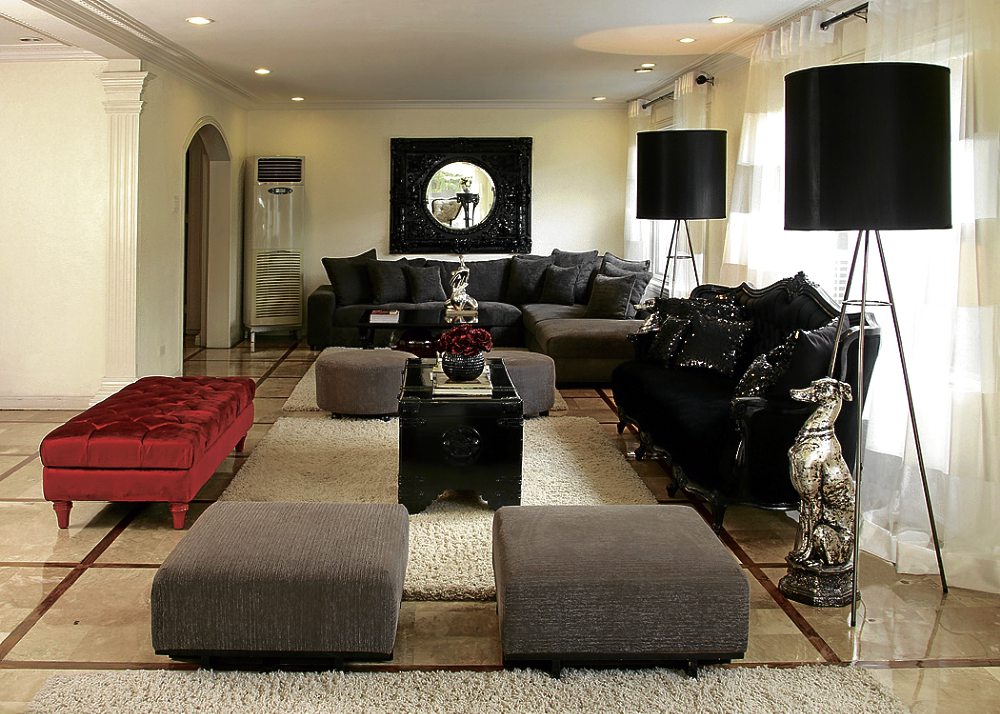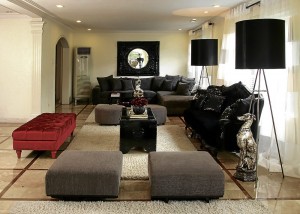
When Rodolfo “Dobie” Aranda was still a full-time fashion designer, he would frequently visit a furniture store to admire a pair of curvaceous chairs with steel legs. With his budget, he found the price tag of P17,000 prohibitive.
One day, the chairs went on sale for P7,000. Upon buying them, he told his carpenter to simplify their framework and change the synthetic upholstery into brown velvet suede. When the client saw the refurbishing, she immediately snapped the chairs up.
“Then I came out in ‘Urban Zone’ and in other TV programs,” says Aranda. “While everybody was going Zen, I went French. Just as in the fashion shows before, when everyone was using chiffon, I showed taffetta or satin.”
For over a decade, Aranda has been quietly redoing old European-style furniture to give them a modern flair.
In dressing up furniture and homes, Aranda imbues things with his fashion sense, with fabrics normally used for garments rather than upholstery and a restrained color palette.
Aranda recalls that he acquired his sense of style from his mother, Chita Sarte, who was one of Manila’s best-dressed women in the ’80s.
Transition
Although he wanted to pursue architecture in college, his father told him to work instead, since the family lacked funds. Aranda started as an assistant for former designer Rusty Lopez, and for the then RTW label Pizzazz. From 1983 to 1989, he rose to fame as the designer for Kirei boutique, as his clothes were worn by celebrities and Manila’s social set. The Kirei look was known for the exaggerated shoulder pads and the sharp tailoring. Aranda later evolved into Japanese-inspired silhouettes that were sculpted, asymmetrical, oversized and monochromatic.
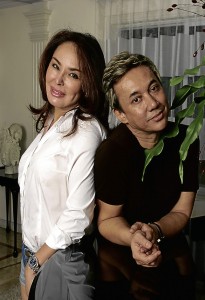
The designer then opened a boutique under his name in Glorietta. But the rising cost of rent forced him to close shop, and work from his home in Palanan, Makati.
In the past two decades, he has been scouring secondhand stores and antique shops for discarded furniture, pieces that other people would ignore. They would be repainted and reupholstered with rich fabrics for a fresh look.
“I find more fulfillment in fixing broken chairs and selling them. They are diamonds in the rough,” says Aranda.
When clients visit his house, they would be awed by his pieces, and often would ask to buy them. He recalls that a lady was eager to completely furnish her home. An interior designer accompanied her to Aranda’s place to show her a retro chair and its matching footstool that Aranda updated with furry upholstery.
Instead, she eyed everything—including the handmade Balinese bed, a repro of a Florence Knoll sofa, a metal-accentuated table as wide as a queen-size bed, Edwardian chairs, a Chinese throne and his lighting elements.
“She said, ‘Leave your refrigerator and clothes. I’m taking everything!’” says Aranda. The designer was left with an empty house.
In decorating spaces, his earliest project was a 35-sqm pied-à-terre of a provincial mayor, which Aranda transformed into a hotel suite of sorts. To visually expand the space, he installed a giant mirror as a headboard and put up another giant mirror in front of it. The place was decked with chrome furniture and a French antique coat rack to offset the modernity.
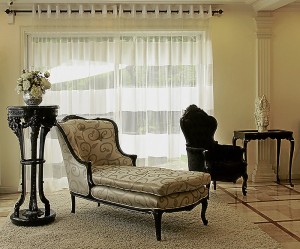
Aranda is working on the Greenbelt 5 store of designer Albert Andrada and other residential projects.
Scavenger hunt
A few years ago, he befriended his client, businesswoman Anna Sia, who had a penchant for redecorating her house every year. Over time, she had been accumulating antiques, which she purchased in her trips to Europe and from such collectors as the late interior designer Edgar Ramirez. Weary of the maximalist and antique look, she put her expensive pieces on a garage sale and sold them for a song.
“I met Dobie when I was in the process of simplifying my life,” says Sia. “Looking at his pieces, I thought we shared the same fondness for curves and classic lines. We both dislike clutter.”
Her house was a mix of Mediterranean colors and neoclassical elements. The place was stripped of color, and the spaces freed of excess elements, opening up to highlight the owner’s favorite pieces and Aranda’s new works. The decorator sticks to a certain period furniture style, which focuses on soft lines and form rather than embellishment.
The previous decor was dark and metallic, suffused with bronze and gold. Last year, Aranda introduced a black-and-white theme. This year, he infused one accent color.
“I like black, white and earth tones. Can’t you see from my clothes?” says Aranda, who was dressed in all-black.
He adds that he likes to mix history with modernity. Contemporary pieces such as the sectional sofa and designer lamps blend seamlessly with the period pieces. The furniture pieces on the ground floor are unified by the choice of rich fabrics—damask, velvet, damask and jacquard, and the dark colors.
His choice of materials is unconventional: silk tweed, normally made into suits, cover the dining chairs. Black sequined fabric, conventionally used for cocktail dresses, end up as pillow covers.
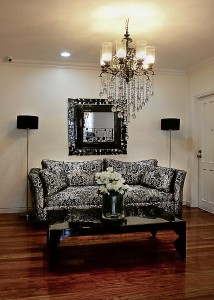
“I didn’t go to a home store to buy the curtain material,” says Aranda. “I picked organdy, which is used for gowns.”
The unlikely pairing of the bold drapes and sequined pillows with a Queen Anne sofa makes the space eclectic.
The simple lines and solid color scheme of the furniture are set off by ornate details such as hand-carved doors from India, a rococo mirror frame of faces and an intricately carved buffet table. The decorator further dramatizes tiered chandeliers with exquisite teardrop crystals.
During a hunt of antiques, Aranda chanced upon two wing chairs that were unloaded by a prominent family. After purchasing them, he covered the chairs in a satiny vanilla fabric. The period chairs add richness to the owner’s contemporary bedroom.
In all, Aranda’s formula is simple: arrange modern and antique pieces in such a way as to emphasize each other.

